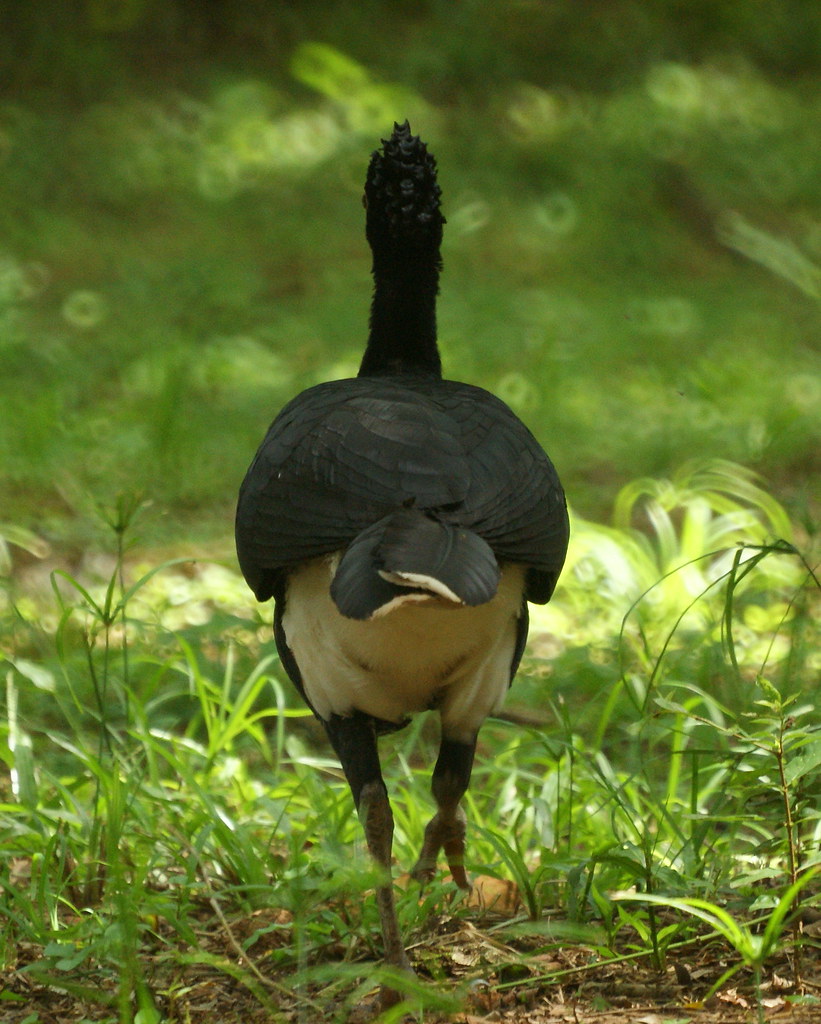Today is a tribute to an avian great, the Yellow-knobbed Curassow (
Crax daubentoni)! Yellow-knobbed Curassow Day was decreed by Brad Walker, one of the current techs working on the
Forpus project that I participated in last fall. Reasons for this decree are unimportant - the magnificence and wonder of these birds overwhelms all. During my time in Venezuela, I repeatedly tried to capture that magnificence on camera but was left crying in abject failure. This was the only image I managed to capture of this species:

That will simply not suffice for Yellow-knobbed Curassow Day, so I am forced to turn to Flickr. For the full extent of the yellow knob,
click here.
You cannot compete with this hair, ever.
The only full-body view this Crax is willing to give you
 (Source - Flickr)
(Source - Flickr)So, go out and celebrate. If you are actually in the range of this species and have a chance at seeing it - get outside. If, like me, you are not currently in the range of any Crax species, lament your poor fortunes and start planning your next Neotropical trip. Long live the Cracids!

















